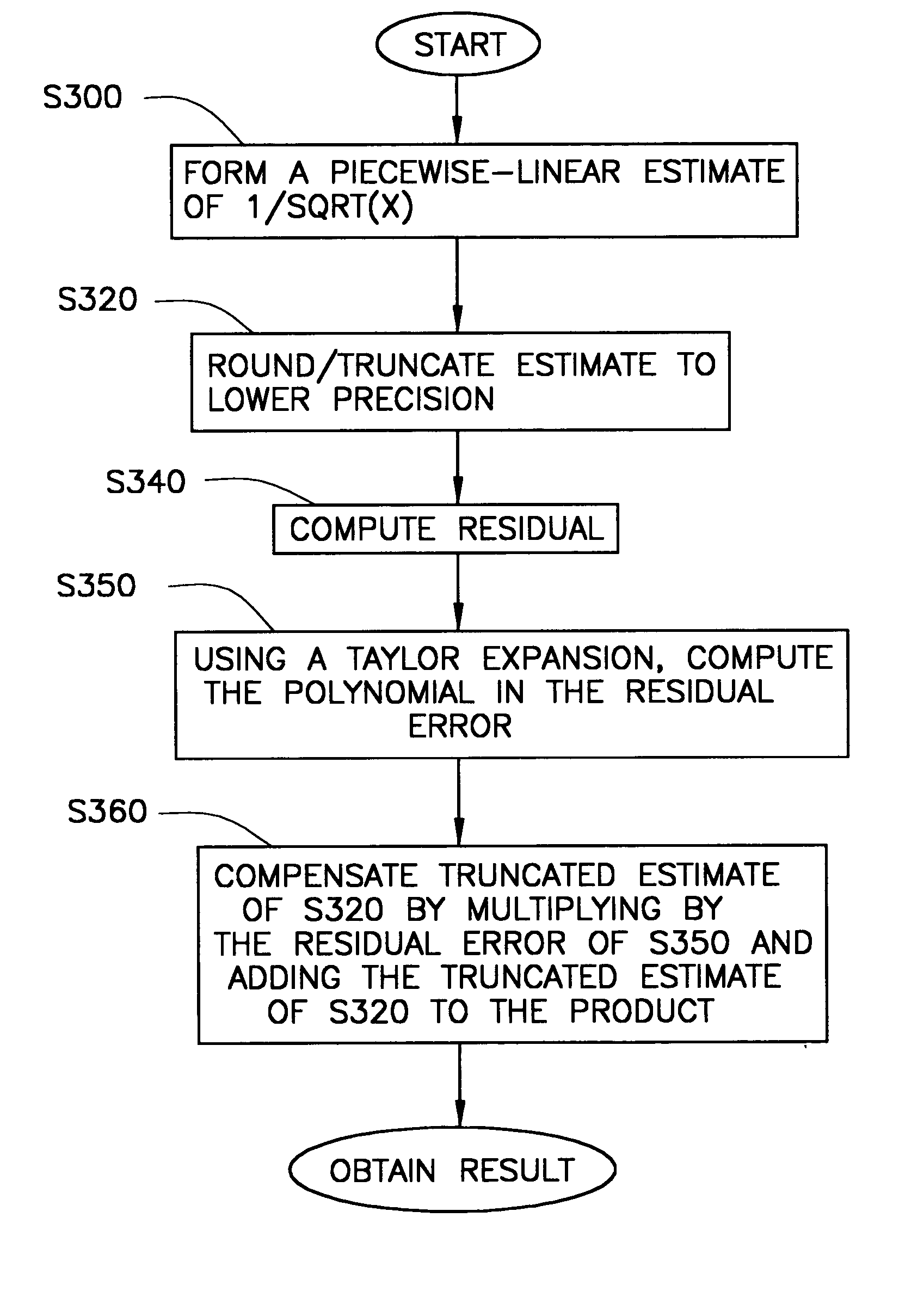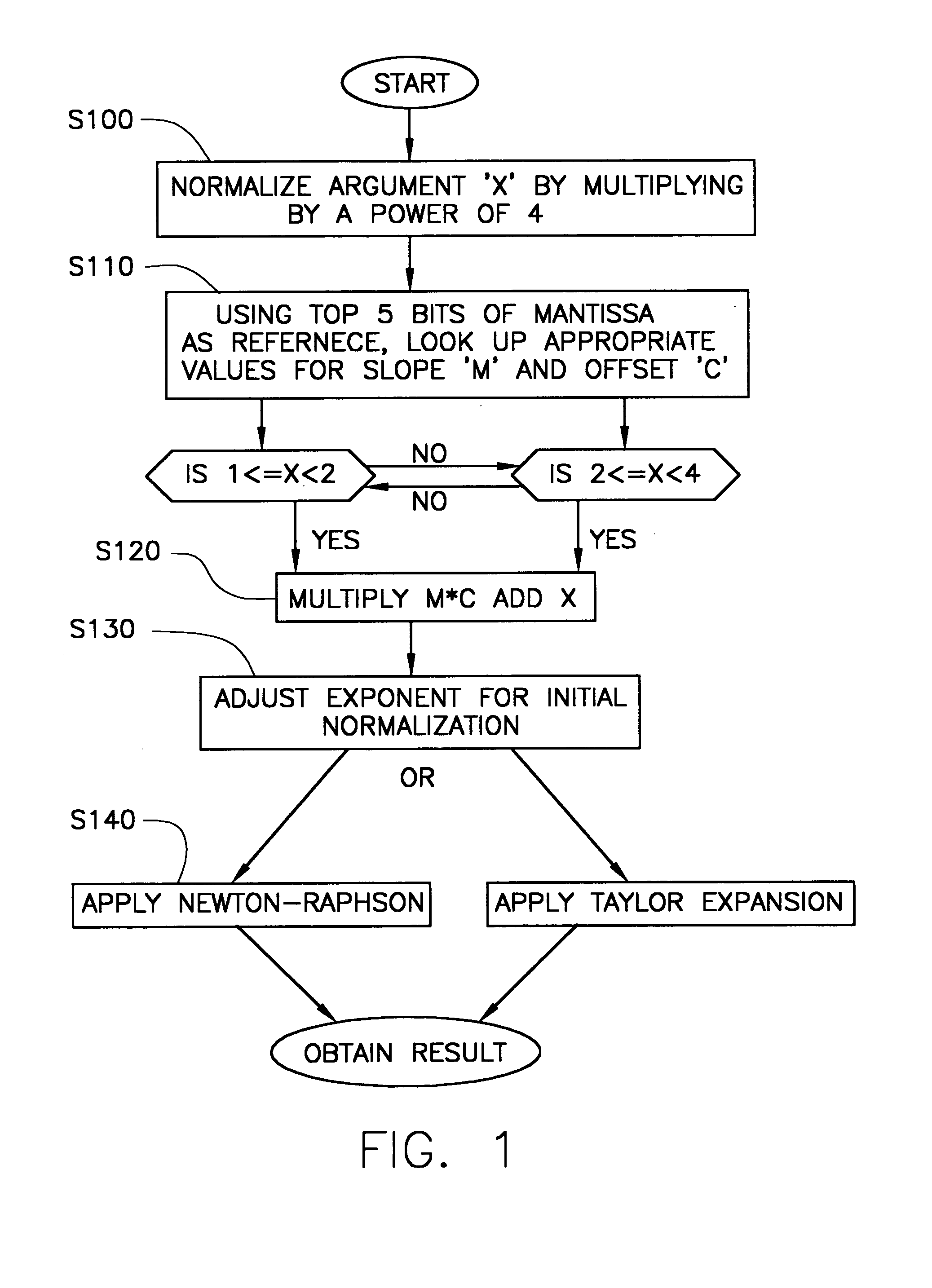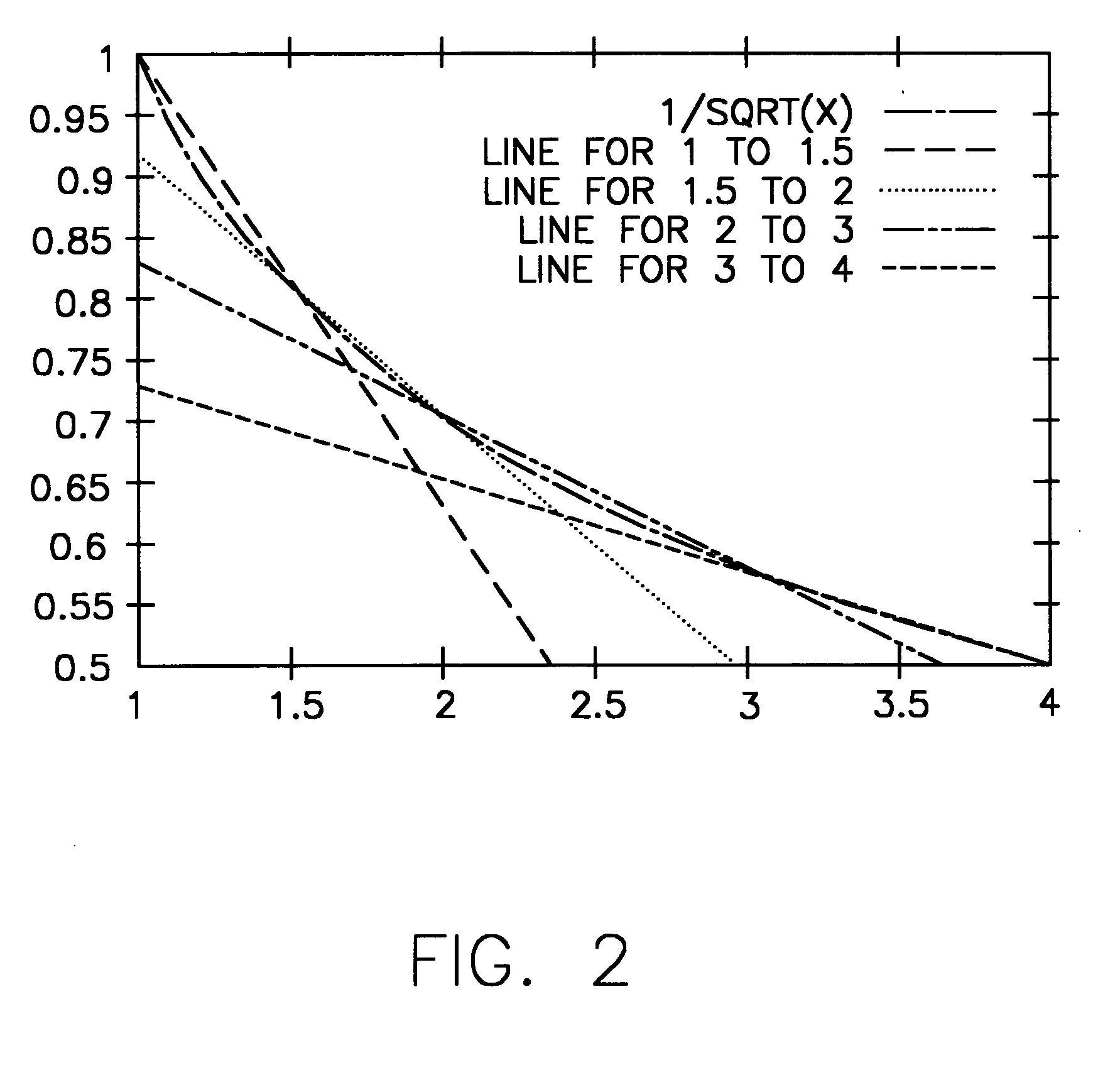Increased precision in the computation of a reciprocal square root
- Summary
- Abstract
- Description
- Claims
- Application Information
AI Technical Summary
Benefits of technology
Problems solved by technology
Method used
Image
Examples
Embodiment Construction
[0017] As previously discussed, IBM PowerPC processors all contain a ‘reciprocal square root estimate ’. Referring now to FIG. 1, a piecewise-linear estimate for the reciprocal square root is formed initially. In this implementation of the function, at S100, the argument is first normalized (multiplied by a power of 4) into a range of 1110, the top five bits (after the implied leading ‘1’) of the mantissa are used to index one of two pairs of 32-element tables, depending on whether x is in the range ‘1120, The value ‘m*x+c’ is calculated and, at S130, the exponent is adjusted for the initial normalization. At S140, to get from this estimate to the desired result one of two well-known conventional methods is generally used—the Newton-Raphson Iteration or the Taylor Series Expansion.
[0018] The process of forming a piecewise-linear estimate is described in S100-S130, is discussed below, and is well known in the art. See Abromowitz and Stegun, Handbook of Mathematical Functions, (1964)...
PUM
 Login to View More
Login to View More Abstract
Description
Claims
Application Information
 Login to View More
Login to View More - R&D
- Intellectual Property
- Life Sciences
- Materials
- Tech Scout
- Unparalleled Data Quality
- Higher Quality Content
- 60% Fewer Hallucinations
Browse by: Latest US Patents, China's latest patents, Technical Efficacy Thesaurus, Application Domain, Technology Topic, Popular Technical Reports.
© 2025 PatSnap. All rights reserved.Legal|Privacy policy|Modern Slavery Act Transparency Statement|Sitemap|About US| Contact US: help@patsnap.com



